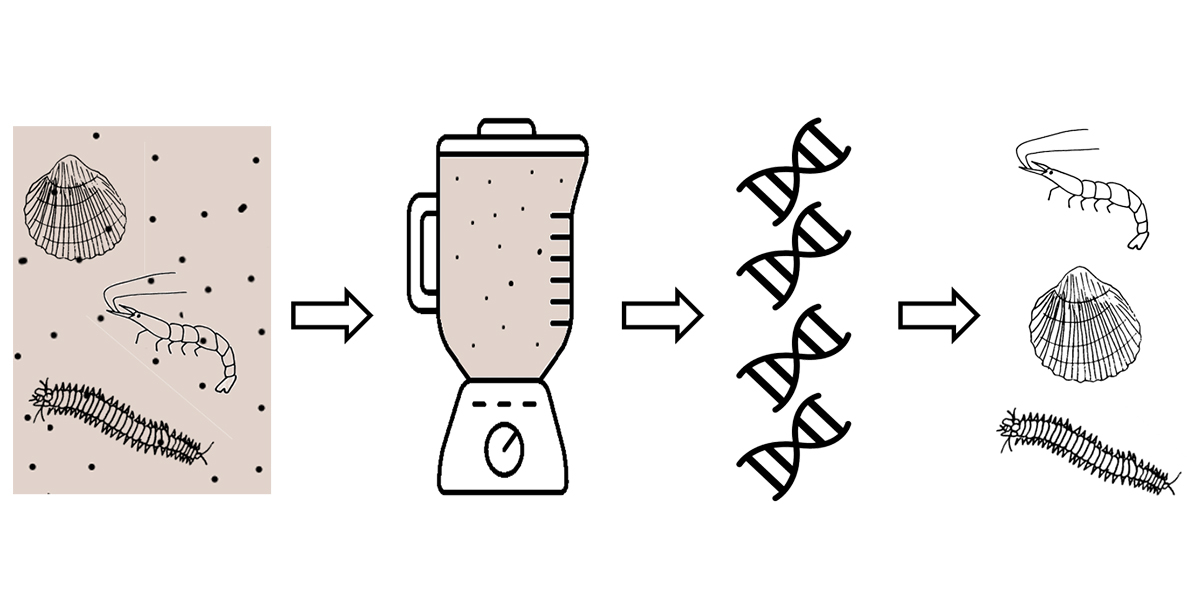DNA-based method pushes marine benthic research to next level
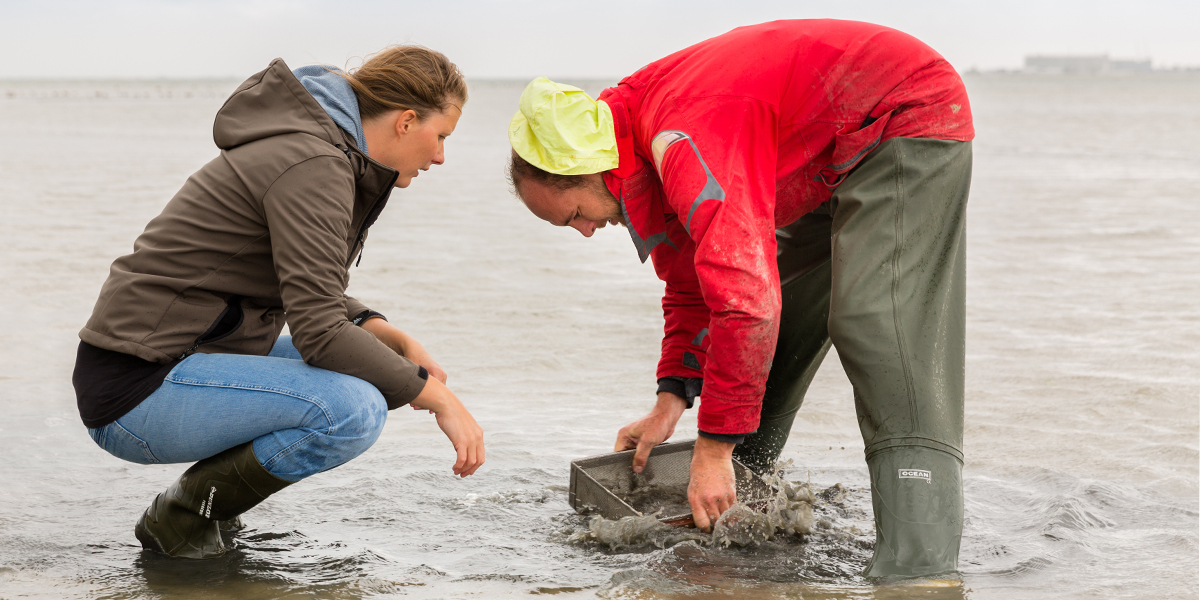
Validation by comparison
In the examined environments, from the Wadden Sea to the deep sea, human impact poses a threat to biodiversity. ‘To anticipate changes, consistent and reliable monitoring of the benthic diversity is essential’, says Klunder. The marine biologist turned to the molecular tool of DNA metabarcoding for species identification. Klunder: ‘DNA barcodes contain valuable information for species identification. Nowadays, millions of these barcodes derived from environmental samples can be processed simultaneously by massive, parallel sequencing.’
The traditional method for measuring biodiversity, using morphological taxonomy of individual specimens, is time-consuming, labour-intensive and requires specialized taxonomic knowledge. Researchers sort the sediment samples, count the specimens and identify them into categories of species. Specimens smaller than half a millimetre usually get neglected. The same goes for specimens that don’t belong to the well-known taxa. Especially in the environments less well monitored, like the deep sea, the method impairs biodiversity estimates.
The well documented benthic life of the Wadden Sea, which has been monitored by NIOZ researchers over decades, provided a strong baseline for validation. Klunder took the same samples used in the traditional method, but instead of selecting and counting by hand, she put them in a blender. Klunder: ‘The outcome of the DNA analysis on the impact of human-driven influences on the benthic communities was comparable to the outcome from the traditional method. Moreover, metabarcoding included the micro- and meiofauna. These specimens would have been lost in the traditional inventory but still play a major role in the ecosystem functioning. This increased the power of the analysis.’
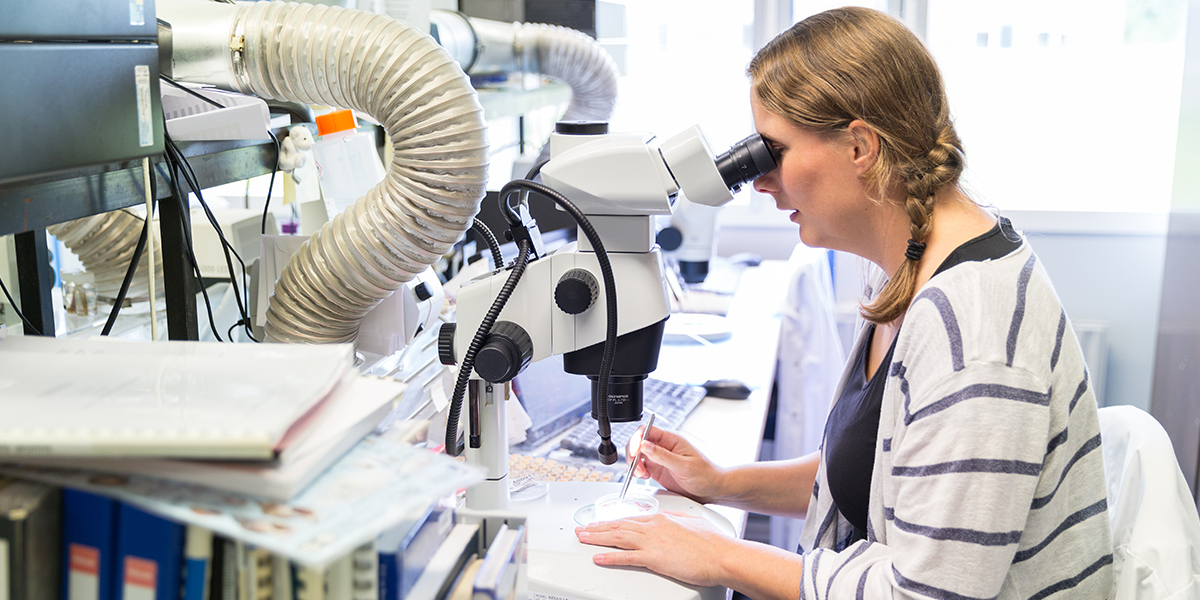
Signalling change
In the Mid Atlantic Ridge, close to the Azores, Klunder looked at the impact of a natural hydrothermal vent plume on nearby benthic life to get a better idea of the possible consequences of deep-sea mining. Klunder: ‘Mining creates toxic plumes with high metal concentrations. DNA-analysis of sediment samples showed that benthic communities differed among locations and that those differences were significantly related to the plume’s fall-out.’ As communities are already influenced by the natural plume’s fall-out, it is likely that the unnatural plumes, created by deep-sea mining vehicles, will affect the local benthic communities and might decrease biodiversity.
In the more complex ecosystem of the deep sea, the method proved a great leap forward. Klunder: ‘At the Wadden Sea, which is less complex and where we know most of the species, analysing a sample with traditional morphology would take about an hour. In the deep sea, where many species are still unknown and which is far harder to reach, this would take three months.’ In comparison: Using metabarcoding, Klunder needed about a week to process and analyse the complete set of samples from the deep sea.
Limitations to overcome
Klunder concludes that the metabarcoding approach outcompetes the traditional approach by including the smaller fauna and the ability to faster assess complex, relatively unknown communities. However, she warns that the approach also has limitations. Although it identifies the species, it doesn’t provide information about their abundance. Klunder: ‘It limits quantitative analyses and gaps in the reference library can lead to misidentification’, aspects that Klunder hopes to tackle in future research. Klunder: ‘Traditional taxonomy has been applied for centuries, the metabarcoding approach, including the knowledge of its limitations, is relatively new. Molecular approaches are developing fast and it is likely that the limitations will be overcome and actually increase the value of DNA metabarcoding.’
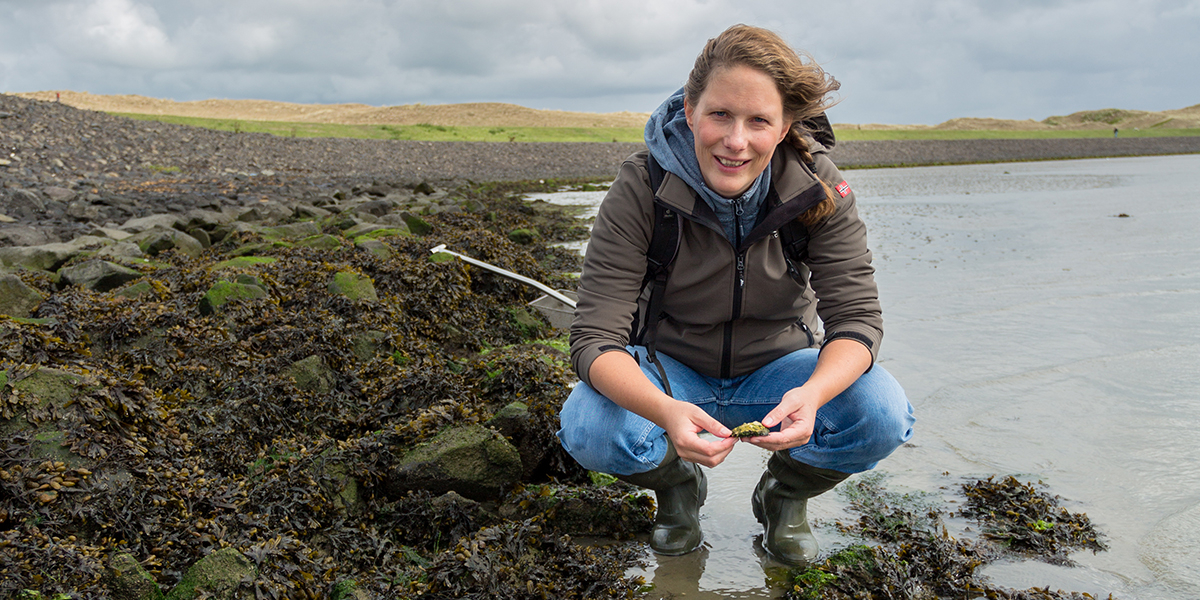
Defence
Marine Benthic Metabarcoding
Anthropogenic effects on benthic diversity from shore to deep-sea; assessed by metabarcoding and traditional taxonomy
Lise Klunder (NIOZ, University of Groningen)
Friday, 30 October 2020, 12:45
Join the defence online through the link at: www.rug.nl/digitalphd
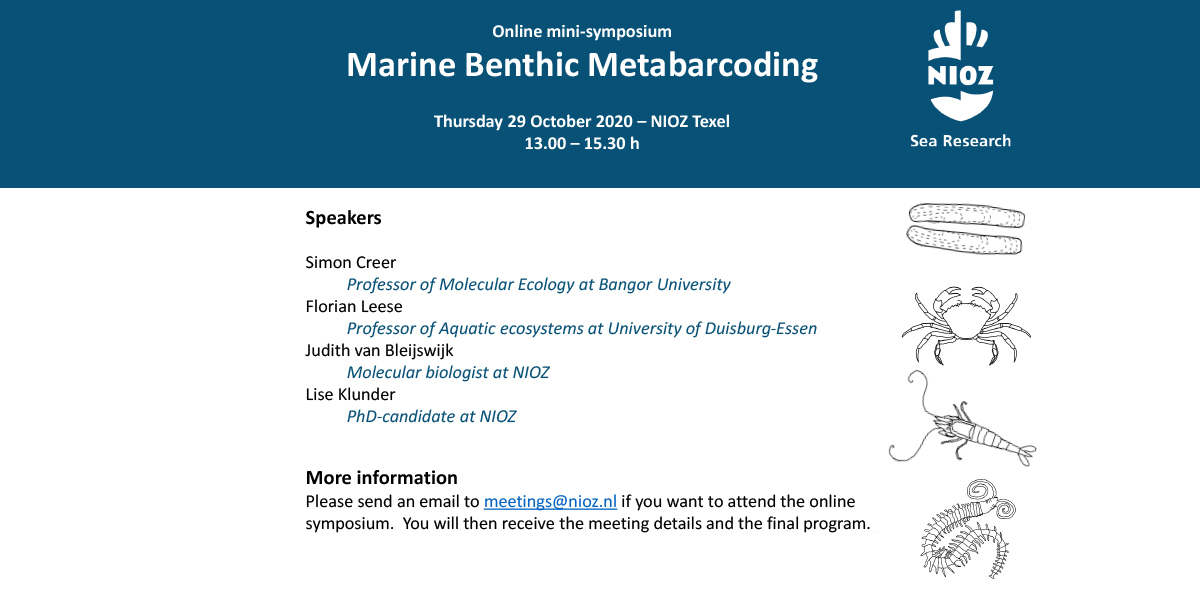
Online mini-symposium
Marine Benthic Metabarcoding
Thursday, 29 October 2020, 13:00-15:30
More information or signing up:
meetings@nioz.nl
